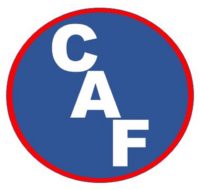The basic operation of a basic CAF system:
NOTE: It is not recommended that fire personnel attempt to operate a CAF System on or off a fire scene without prior thorough knowledge of A-Foam basics and without the expressed permission from the local authority having jurisdiction. Prior to operating the CAF system, obtain permission from your FD and ensure that you operate the system as per your department’s Policies, Procedures and Guidelines and under supervision as assigned and directed.

There are a couple of steps for each, however, with the right direction and practice, pump operators can learn anything.
For example: This example assumes a standard high volume structure type engine with a pto driven compressor. (Other types of systems will be listed later)
WATER – Turn on the WATER (9 Steps). Sounds simple and all firefighters learn this step. There are actually several steps involved – 1 – Stop the truck, 2 -set the brakes, 3 – put the transmission in neutral, 4 – switch the road to pump transfer switch, 5 – put the transmission in pump gear, 6 – set the wheel chocks, 7 – open the tank to pump valve, 8 – prime the pump if necessary, 9 – open the WATER Valve, and 10- Adjust the pressure – shew, that’s a lot.
CONCENTRATE – Turn on the CONCENTRATE (1 step) – Push the RED Button.
COMPRESSED AIR – Turn on the COMPRESSED AIR (2 steps) – (assuming a PTO System) – at the same time as turning on the WATER step 5, put the PTO in gear, then turn on the AIR Auto Sync Switch
All ingredients to FOAM are turned on – now just send the ingredients down the hose.
Simultaneously – open the WATER/CONCENTRATE (SOLUTION) Valve and the COMPRESSED AIR valve (you were already going to open the WATER valve anyway)
AGITATION – This is accomplished inside the rough interior of the fire hose (assuming a minimum of 100′)
ADJUST the PRESSURE to 100 psi (you were already going to do this anyway)
ADJUST the VOLUME – Once the nozzle is open and flowing, adjust the flow to 95 gpm.
Basically, there are only 5 extra steps to run a CAFS. 1 – Turn on the compressor, 2 – turn on the CONCENTRATE (RED Button), 3 – Turn on the Air Auto Sync, 4 – open the air outlet valve simultaneously with the water/concentrate (SOLUTION) outlet valve, and 5 – after the CAF is flowing, adjust the water volume to 95 gpm.
Let’s Review: By the way… this chart can be printed, laminated and mounted on the pump panel for easy reference.

The switch and valve set-up and component engagement process may vary from manufacturer to manufacturer, so be sure to follow your manufacturer’s instructions for engaging the system components. However, the basic Ingredient Formula for making CAF will always be the same – W (99.7%) + Conc (.3%) + A (Compressed) (2:1) + A (In the Hose) = CAF.
The goal now is to practice this process over and over again (under supervision) until you are totally comfortable with the system operation. Do not deviate from the steps/numbers listed. Once you can operate the system as if it were 2nd nature, then it will be time to move to the next section.
But Why the Specific Numbers listed above?
If the basic CAFS operations (and the Why’s) are now a comfortable process, it’s time for the Next Step – The CAF System – The System Parts and Function of Each Part {Link coming soon}
SECTION SUB PAGES (listed/linked below or in the top drop down menu or in the right hand column)




























